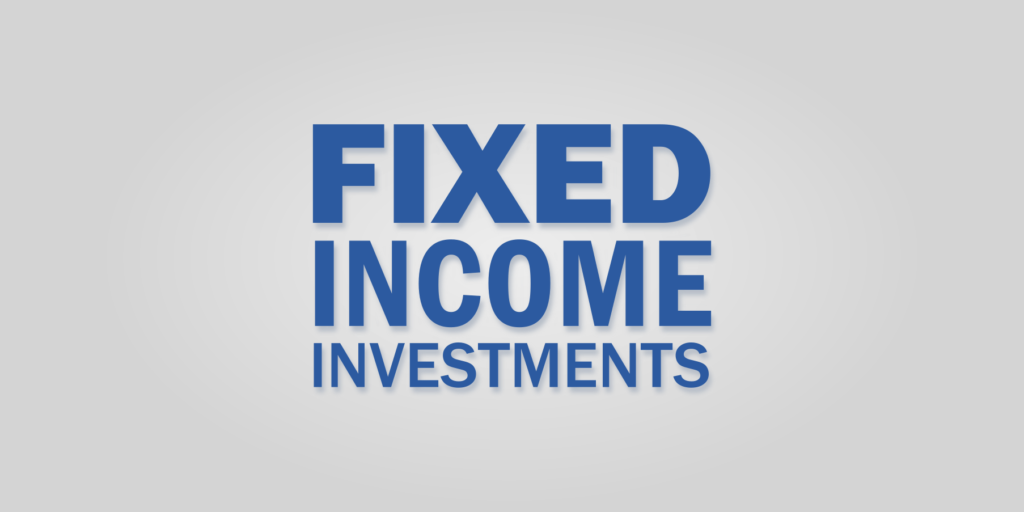
For salaried individuals in India, investing in fixed income instruments is a prudent way to preserve capital, generate regular income, and achieve financial stability. Fixed income investments are known for their relatively lower risk compared to equity investments, making them an attractive choice for conservative investors. In this article, we will delve into various fixed income investment options, with a focus on small savings schemes that are well-suited for salaried individuals in India.
Exploring Fixed Income Investment Options:
1) Public Provident Fund (PPF)
PPF is a popular long-term savings instrument with a tenure of 15 years. It offers tax benefits under Section 80C of the Income Tax Act. The interest is compounded annually, and the current interest rate is set by the government periodically.
2) National Savings Certificate (NSC)
NSC is a fixed-income investment with a maturity period of 5 or 10 years. It provides tax benefits under Section 80C. Interest is compounded annually, and the investment is backed by the government.
3) Senior Citizens Savings Scheme (SCSS)
Specifically designed for individuals aged 60 years and above, it offers a higher interest rate than many other fixed income options. The maturity period is 5 years, extendable by an additional 3 years.
4) Sukanya Samriddhi Yojana (SSY)
Aimed at promoting savings for the girl child, it has a tenure of 21 years or until the girl child turns 18.
It provides tax benefits under Section 80C.
5) Post Office Monthly Income Scheme (PMIS)
It offers a fixed interest rate payable monthly. The tenure is 5 years, and the investment amount is capped. It provides a steady monthly income stream.
6) RBI Taxable Bonds
It is issued by the Reserve Bank of India. Maturity period is 7 years with an option to exit after 5 years. Interest is taxable, and there is no upper limit on investment.
7) Fixed Deposits (FDs)
This is offered by banks and financial institutions. Various tenures are available, ranging from a few days to several years. Interest rates may vary, and interest income is taxable.
8) Corporate Fixed Deposits
It is similar to bank FDs but is issued by private companies. Higher interest rates may be offered, but they come with higher risk. Investors should carefully assess the creditworthiness of the issuing company.
Drawbacks of Fixed income Investments
While fixed income instruments offer stability and predictable returns, they also come with certain drawbacks. It’s essential for investors to be aware of these drawbacks to make informed decisions. Here are some common drawbacks associated with fixed income instruments:
1) Interest Rate Risk
One of the primary drawbacks is the interest rate risk. Fixed income instruments typically have fixed interest rates, and when market interest rates rise, the value of existing fixed-rate bonds tends to decrease. This can result in capital losses for investors who wish to sell their bonds before maturity.
2) Inflation Risk
Fixed income instruments may not keep pace with inflation. The interest earned may not be sufficient to offset the rising cost of living, leading to a decrease in the real purchasing power of the returns.
3) Liquidity Risk
Some fixed income instruments, such as long-term bonds or certain government schemes, may have restrictions on premature withdrawals. This lack of liquidity can be a drawback, especially in situations where investors may need access to funds in emergencies.
4) Credit Risk
There is a risk that the issuer of the fixed income instrument may default on interest payments or fail to repay the principal amount at maturity. This credit risk is higher for instruments issued by entities with lower credit ratings.
5) Reinvestment Risk
When interest rates decline, the income generated from maturing fixed income investments may need to be reinvested at lower rates, potentially reducing the overall portfolio yield.
6) Limited Capital Appreciation
Unlike equities, fixed income instruments typically offer limited opportunities for capital appreciation. Investors looking for significant capital gains may find these instruments less appealing.
7) Tax Implications:
Interest income from fixed income instruments is generally taxable. Depending on an individual’s tax bracket, this can significantly impact the after-tax returns. Tax treatment varies for different instruments. Interest on PPF is exempt from tax.
8) Currency Risk (for Foreign Instruments)
If an investor holds fixed income instruments denominated in a foreign currency, they are exposed to currency risk. Exchange rate fluctuations can impact the returns when converting foreign currency back to the investor’s domestic currency.
9) Opportunity Cost
Investing heavily in fixed income may mean missing out on potential higher returns that could be achieved through riskier but potentially more lucrative investments, such as equities or real estate.
10) Market Conditions
Changes in economic conditions, monetary policy, and market sentiment can affect the performance of fixed income instruments. For instance, rising inflation, economic downturns, or sudden changes in interest rates can impact returns.
Balancing the benefits and drawbacks of fixed income instruments is crucial for a well-rounded investment strategy. Salaried individuals should carefully consider their risk tolerance, financial goals, and time horizon when selecting fixed income options. Diversification across various instruments and regular reviews with a financial advisor can help navigate the dynamic landscape of fixed income investments, ensuring a resilient and goal-oriented investment portfolio.
Disclaimer: The information provided in this article is for educational and informational purposes only. It should not be construed as financial advice. Before making any investment decisions, readers are strongly advised to consult with a qualified financial advisor who can provide personalized advice based on individual circumstances. The content of this article is not intended to be a substitute for professional financial guidance, and the authors and publishers are not liable for any losses or damages incurred as a result of reliance on the information presented. Investment decisions involve inherent risks, and individuals should conduct thorough research and analysis or seek professional assistance before making any financial commitments.





